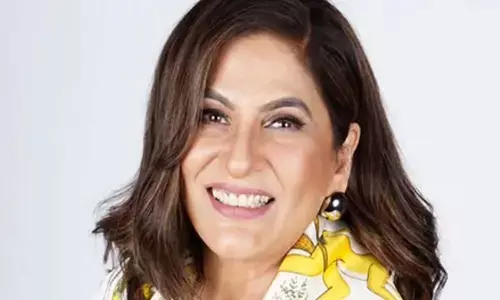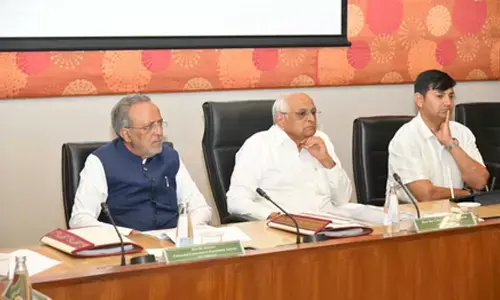Remembering Muthulakshmi Reddy

Remembering Muthulakshmi Reddy
The doctor and feminist who led the battle against India's caste-based misogyny
She was made the first member of the Women's Indian Association, and was subsequently nominated to the Madras Legislative Council
"How dare you call them fallen sisters. The man falls before the woman falls. The men are always older and know what they are doing. Without male chastity, female chastity is not possible. All laws should be equal to men and women and both should be equally responsible," Dr Muthulakshmi Reddy — legendary medical practitioner, social reformer and legislator from Pudukottai in erstwhile Madras Presidency — thundered, after a highly placed speaker commended her work for her "fallen sisters", or Devadasis, at an event to felicitate her. This followed the passing of the 1930 bill for 'prevention of dedication of young girls as Devadasis' by the Madras Presidency on 5 December 1947.
Decades later, a well-known intellectual said in a speech: "Dr Muthulakshmi Reddy, herself a Devadasi, went abroad, and because of that felt ashamed of the system, and with a stroke of pen rendered all these illegal". Where was the legality, is the question.
The Devadasi system was nurtured by upper-class men who wanted to have their cake and eat it too. In the system, young women were made to undergo a religious ritual at a pre-pubescent age, and subsequently marked as a potential concubine. This ritual and the acceptance of the 'concubine' status qualified the girl for learning music and dance, and performing in public spaces. Either a patron would choose her, or one would be chosen for her by her mother. This male benefactor would then be granted access to her art, which she would subsequently pass on to her children. However, he would not give her rights to his name or inheritance.
If the patron did not have a male heir with his legal wife, but begot one with a Devadasi, the child would still not be granted legal rights to cremate his biological father on the occasion of his death. He would have to remain only his mother's son, and would be forced to pursue the art even if he lacked interest or talent in the field.
Similarly, Devadasis also practised adopting young girls as daughters in the absence of a female child, in order to pass on their craft and keep the profession alive, irrespective of the girl being interested or skilled in the craft. Their femininity was a burden they had to bear.
A renowned academic had once mocked lawyer and activist E Krishna Iyer for not wanting to include a 'Javali' (musical composition on love) — in which the woman teases her man, claiming that she is yet to be satisfied — in performances. One wonders if the Javali would have been accepted in the context of 'freedom of female sexuality' had it actually been written by a woman instead of Kshetragna, the prolific Telugu poet. Also, one imagines if a dancer would have been brave enough to perform it for a large, young audience, such as a men's college, instead of at a private salon, where the predominantly male audience would be connoisseurs.
Articles and books abound on the dauntless spirit of the Devadasi women, their sexual freedom, and the influence they held in society. But the exploitation of these women hardly finds mention.
"Annam, a dasi in 1842, had her pottu tied at the age of ten and she, according to records, was entitled to one kalam paddy every month, and one-and-a-half handfuls of cooked rice a day," writes Davesh Soneji in Unfinished Gestures: Devadasis, Memory and Modernity in South India. Therefore, one can surmise that the Pottukattuthal ceremony was a 'transaction that secured a girl's commitment to local economies of land and guaranteed her sexual and aesthetic labor'.
Writer Samhita Arni has stumbled upon an important revelation in her research on the Tamil epic Silappadhikkaram (probably written around the end of the Sangam period in 2nd century AD). According to Arni, the story of Kannagi and her husband Kovalan, who fell for the court dancer Madhavi, could be based on a real woman named Kannagi, whose story has been written in Purananuru by Kapilar and Paranar. Kannagi was grief-stricken because her husband, the chieftain Vel Pakan, had been enticed by the charms of a dancing girl.
Dancing girls were feared and envied in the Sangam Age too, thereby offering a counter-narrative for the theory that the British stigmatised them. There was envy for the education the women could avail, besides the public gaze on them while they performed. The fear was rooted in the thought that one's son or husband might succumb to the charms of these women.
They were also appeased and invited to rituals at homes to ward off the evil eye, and to bless the mangalsutra at marriage ceremonies on account of being Nityasumangalis, or immune to widowhood, as they were not compelled to marry.
In this light, the ascent of Dr Muthulakshmi Reddy changed the reality of Devadasis and women across the country forever. When Narayanaswamy, the Brahmin principal of Maharaja's College in Pudukkottai decided to marry Chandramal, a Devadasi, and bring her home, his family ostracised him. Muthulakshmi, their first daughter born on 30 July 1886, grew up to be close to her maternal cousins, who also belonged to the Devadasi tradition.
Muthulakshmi was enrolled at a local thinnai, or a school run out of a portico. When she decided to study further, young boys ran behind the bullock cart she travelled in, screaming that a "Devaradial" (Devadasi in Tamil) is going to school. Soon after, all hell broke loose in Pudukkottai, which back then, only had a high school for boys. Some parents threatened to withdraw their sons from the school, stating that the presence of a girl born to a Devadasi would corrupt their minds, even after a curtain was drawn between the three girls and 40 boys in the class. A teacher decided to resign as well. But the Maharaja of Pudukkottai went on to support Muthulakshmi and gave her a handsome scholarship of Rs 150 when she expressed her desire to study medicine in Madras.
The Madras Medical College was shocked when she opted for surgery, as girls were considered faint-hearted and unable to withstand the sight of blood. Muthulakshmi, however, was adamant, and at the end of her four years, the white principal of the college was found running in the corridor of the institute, screaming with a piece of paper in his hands: "The first girl student for surgery has scored 100 percent in surgery!"
Even as a student, Muthulakshmi would attend lectures at the theosophical society. She had also witnessed her 13-year-old cousin die at childbirth. While studying medicine, she would put her cousin's baby to sleep on her thighs, consequently making up her mind that she would work to end the system of dedication of young girls as Devadasis, and remove the stigma attached to them.
She was made the first member of the Women's Indian Association, and was subsequently nominated to the Madras Legislative Council. Besides initiating the bill to pass a law against dedicating Devadasis to Hindu temples, — which, according to her, dehumanised young girls and ultimately pushed them into prostitution — she also fought for abolishing the practice of hiring wet nurses for babies born into upper-class families, and helped Sister Subbulakshmi in her struggle for widow remarriage and education. She even rallied for raising the marriageable age for girls to 16, and for the voting rights of women.
While she was arguing for the bill, three young girls came and knocked on her door. They told her they were running away from being dedicated to temples, and wanted to know what other options they had. She hosted them at her house, and tried admitting them to hostels. The hostels, however, were ruled by caste, while the schools rejected the girls. Finally in 1931, she decided to open 'Avvai Home' in Chennai, named after the ancient Tamil poet who advised kings. The institute admitted older girls too, who could "work in the hostel and study for three hours." A nursing institute, teacher training programme, courses on carpentry, handicrafts, home science, among others, were taught to make young girls vocationally equipped for jobs, while they pursued dance and music on the sides if they wished to.
Thousands of poor women, including many from the Devadasi community, graduated from the institute, and thrived in the anonymity granted by the bill. Those who desired to learn music and dance learnt them too.
Expectedly, upper-caste and upper-class men put up stiff resistance to her proposition of increasing the legally marriageable age for women, and abolition of the Devadasi system. She had to argue with the likes of S Satyamurthy, acclaimed for his rhetoric, and the erudite C Rajagopalachari. After 17 long years of struggle, the bill became an act. Her husband Dr Sundara Reddy supported her at home, and the story of their marriage also makes for an interesting read.
When she saw her younger sister die of cancer, Muthulakshmi decided to specialise in cancer treatment. She flew to London on a limited budget with her sons, and came back to establish the Adyar Cancer Institute in Chennai, which has now gone on to attain legendary status.
On the occasion of her 134th birth anniversary, some of her poignant words come to mind: "Any art and culture worth surviving will certainly hold its own against all times and against all conditions. Our attempt should be to free it from its ugly associations and the incrustations of ages which now keeps it dim and repulsive to many so that the divine art may be learned and practiced by all. Then only India's art, the rich legacy of ages will shine brighter and will command the respect and admiration of the world" — a rather succinct word of advice in the prevailing times.
Courtesy: www.firstpost.com(This article was first published at http://www.firstpost.com. Reprinted with their permission)














